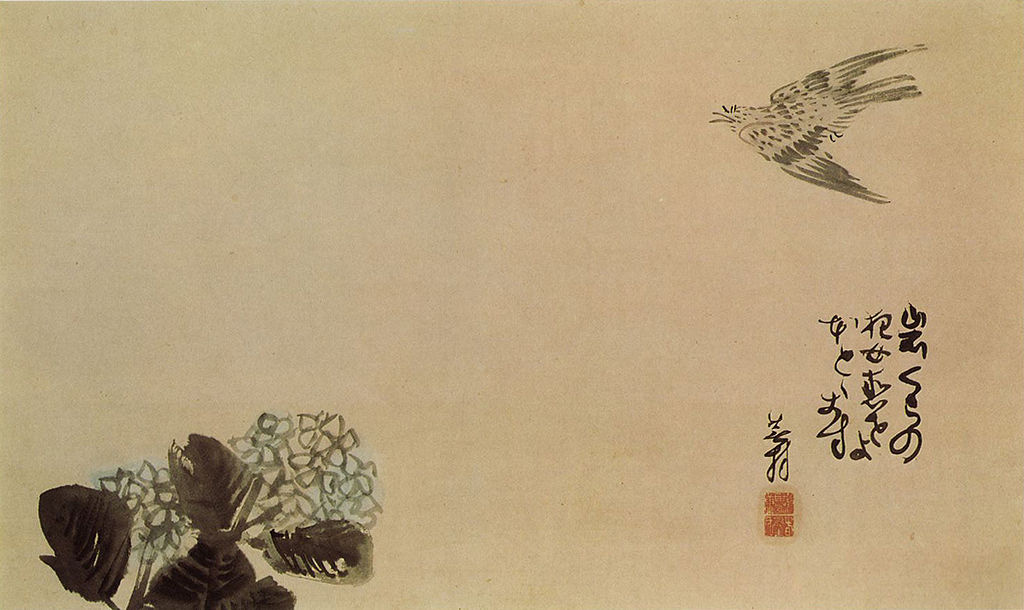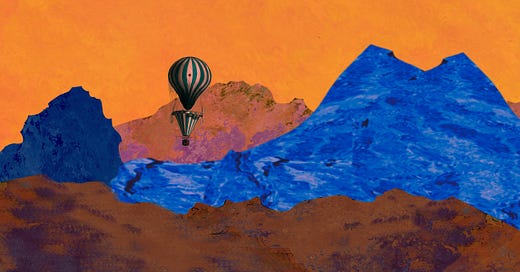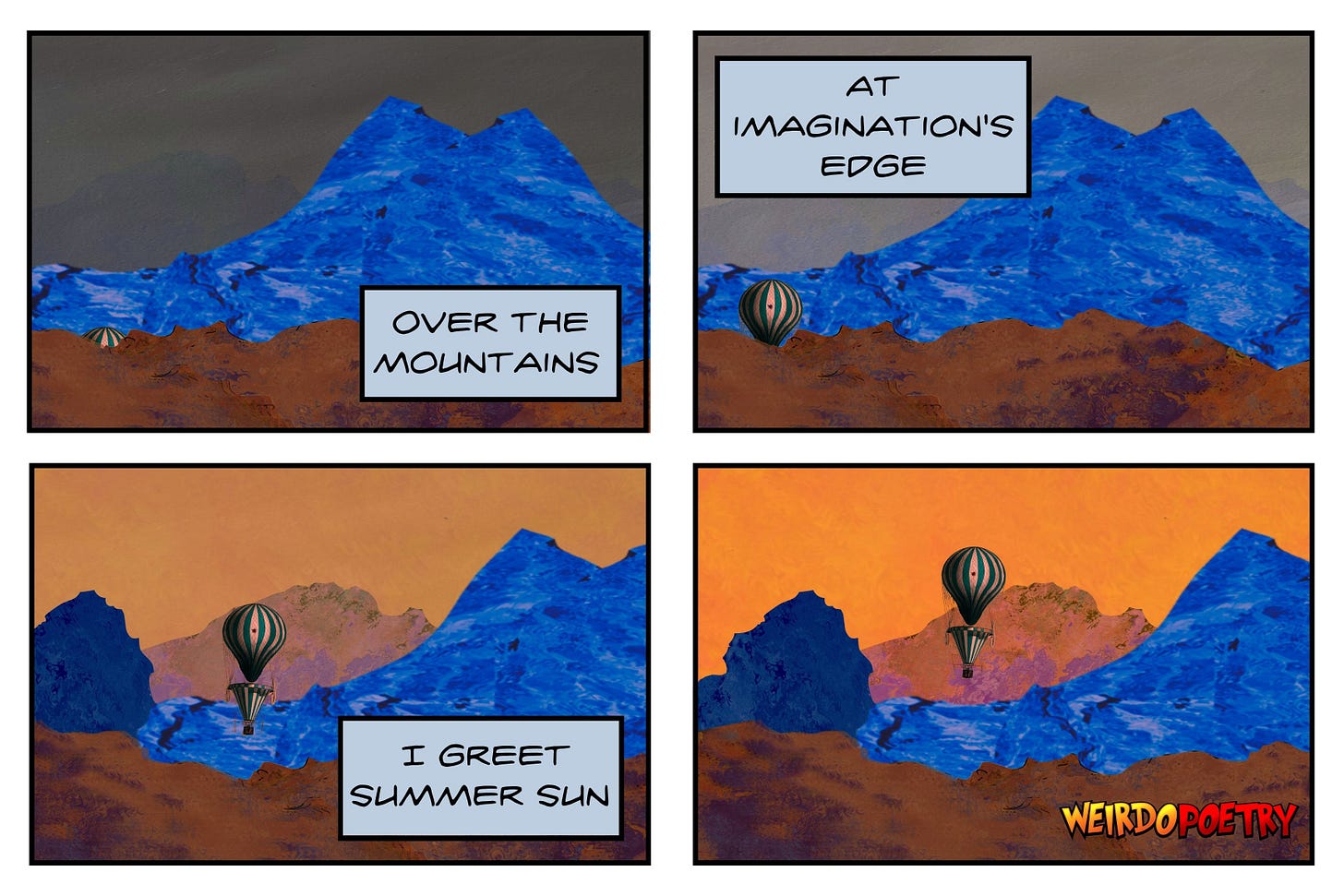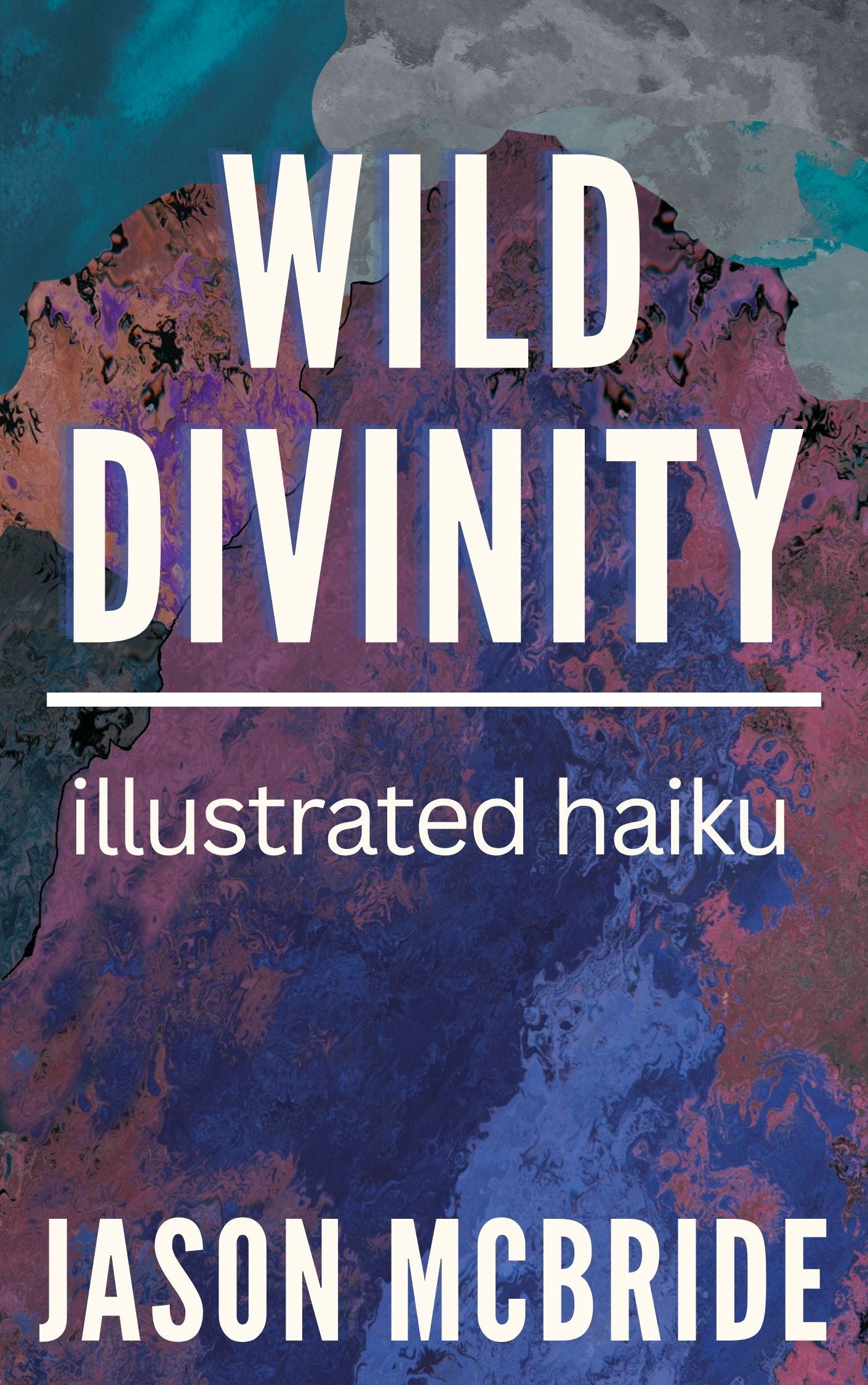Greetings, Haikuistas!
It’s the 22nd week of the year, for everyone keeping track! We’re approaching the halfway point of the year and the summer solstice!
Haiga, My Haiku Comics, & the Geography of Imagination
Often, when we talk about haiku in the West, we flatten a rich, complex tradition. We talk about haiku as short nature poems. But haiku has always been more than that.
One of my favorite parts of the Japanese haiku tradition is haiga. Haiga is a style of Japanese brush painting that combines poetry, calligraphy, and a landscape that is older than haiku, but that came into its own alongside haiku during the lifetime of the first great haiku master, Bashō.
The style of brush paintings that would be called haiga has its origins in Chinese art from the Song dynasty, around 900 CE.
The term haiga as something which means to paint haiku, wouldn’t be common in Japan until the 1800s.

While many Western poets argue about the propriety of combining visual art with poetry, in China and Japan, visual art has long been an integral part of their poetic traditions.
I started making haiku comics because I’ve always loved collage and comics. I liked the idea of smashing together short poems with one of my other favorite short-form art forms, the comic strip. I hoped that haiku comics might beguile the unwitting into being interested in poetry.
I was also mindful of the haiga tradition, and thought of haiku comics as a way of bringing this storied tradition into a 21st-century, social media-dominated visual culture.
The best haiku are hyper-localized. They capture the story of a moment, and are less like snapshots than they are GIFS.
My favorite haiku are dynamic, albeit over a tiny timespan. Comic strips are perfect for telling tiny stories. You can show the movement of small increments of time.
One thing that haiga and haiku comics allow artists to do is fully share the geography of the imagination.
The geography of imagination
Most of my haiku is written about where I live—or more truthfully—how I perceive the place I live. The geography of this place seeps into my poetry and my comics. Here, the sun sets over the Pacific Ocean and rises from behind the Cascade Mountains.
While you can find plenty of places here in Oregon where the sun also sets behind mountains, the constructs of Cascade dawns and Pacific sunsets help guide me, and my readers, through my conception of the world, through my imagination.
Haiku can be written objectively, as if anyone were seeing the scene, or subjectively from the vantage point of the poet. While many poets and scholars have strong opinions about which is the ideal form for a haiku, I think poets interested in haiku as both an art and as a spiritual or creative practice should make use of both objective and subjective storytelling.
How can you ever show someone else the way forward unless you know where you are?
All creativity is a tension between constraints and freedom from constraints. This is why I love haiku so much. There is so much room to play with the handful of constraints that have come down over the centuries. I make haiku comics because I want the constraints of a comic strip while also setting aside the constraints of a single, static scene as in traditional haiga—except for when I do want the constraints of a single scene, but twist it by spreading it out in a kind of polyptych.
As you continue in your haiku journey, I encourage you to frequently experiment with picking up and dropping different constraints. See what comes of it. Try new ways of combining images with your haiku. As I’m fond of telling my children and workshop students, there is no poetry police. Nobody will come and arrest you for trying something new.
What can you create today?
52 Haiku Prompts 21 & 22
All of this brings us to the haiku prompts 21 and 22 for the 52 Haiku Project. This week, write one objective haiku drawing on elements from the geography of your imagination, and one subjective haiku drawing on those same elements.
Here are my two haiku:
Objective: a summer sunrise kisses melting mountain peaks fire in morning sky Subjective: over the mountains at imagination's edge, I greet summer sun
Now, it’s your turn! Share your poems and any context or images you care to add below! (If you want to share an image, you will need to restack this post and then add a photo. Substack does not allow pictures in the comments.)
Thanks for being here! You are always welcome to share these newsletters and comics with your friends and family.
Be the poetry you want to see in the world!
Cheers,
Wild Divinity is 107 pages of haiku comics that take you on a journey through the year, and that also functions as a diary of my spiritual journey as I left the religion I was raised in and began searching for a new way to understand god. Available in ebook, paperback, and hardcover.













Hey Jason, loved this article particularly because I see „geography of the imagination” as one of the purposes my poetry, to bring to life memories of the walks I have been on and the things I have seen.
For this week’s haikus:
Objective:
The sun masked by fog
Colourshifts incessantly
There is no escape
Subjective:
A floating orange
Turns into a smooth lemon
Perhaps a lightbulb
LOVE the gif!! 💞